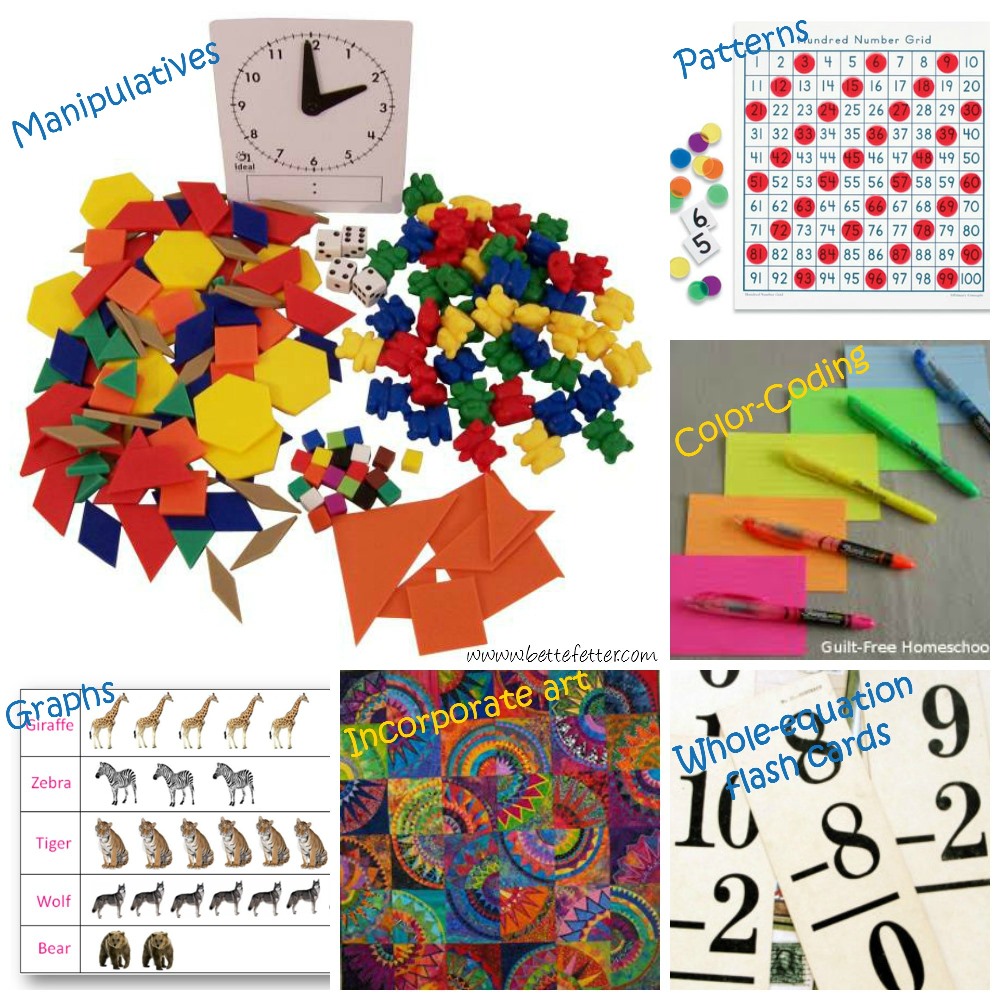Make Your Visual Kid a Math Whiz

Math can be extremely challenging for visual learners. True math is about concepts, patterns and symbols, which visual learners are great at. Math is also about seeing relationships and patterns in numbers. It’s not about memorization, drills or speed, which is how ‘school’ approaches math. These teaching methods leave the visual student at a huge disadvantage, resulting in low self-esteem, poor grades and an aversion to math.
So what do you do? Most importantly understand – the problem is not your child. Visual kids can be great at math. They just have to be taught in ways that work for them. The key to helping them succeed at math is to concentrate on the concept rather than the facts. They need to know why they’re doing what they’re doing before they get to computation. Once they start doing the math – be sure to make it visual, colorful and full of real life application.
Here are some strategies that work well for visual learners:
Use everyday life as a teaching tool- Visual learners need to see a real world application in order to understand the math concept. Have your child help you figure out how much money you need at the grocery store. Teach fractions and measurements while cooking. Count, identify patterns, numbers and geometric relationships all around you. Math is everywhere when you look for it.
Manipulatives– Beads, pattern blocks, square tiles and dice are great tools for teaching math. Using manipulatives helps visual learners “see” the value of numbers, allows them to move and change them and understand better how all the math facts work together. Many schools use manipulatives, but having them at home can help solidify concepts they’re learning.
Make math a game– Most games are visual and include a math component. Choose a game to match your child’s skill level and enjoy playing, without telling them they’re doing math. Once they’re comfortable, talk about the math and be intentional about maximizing the learning. Logic puzzles – like tangrams, pattern blocks, Sudoku, etc. increase the understanding of math concepts and they’re lots of fun.
Make your own flash cards– If you’re going to use flash cards – be sure your child helps make them. The act of writing the numbers and equations will increase comprehension. Once written, your visual learner can take a mental picture of the whole equation to remember the concept. Later when they’re asked to remember, they will recall the picture stored in their brain.
Get to the computer – Sometimes you need to forget the flash cards and timed worksheets and get to the computer. There are tons of math apps out there to make math fun. To increase speed, encourage them to try and beat their own best score. This is way less pressure than timed tests at school and will help prepare them for those tests. Repetition and the fun of the game will help them gain mastery with basic math. 10 minutes a day will go a long way.
Incorporate art- For visual learners, learning and remembering is all about the visuals. Incorporating art into math time will be allow your visual child to really understand and connect with math concepts by physically touching and making them – visual!
Remember, visual kids need math to be real. It has to be more than number drills on worksheets. Be sure they know why it matters. Keep it fun, big picture and visual and they will excel.
Are you wondering which teaching strategies are sabotaging your child’s abilities to succeed at math?










